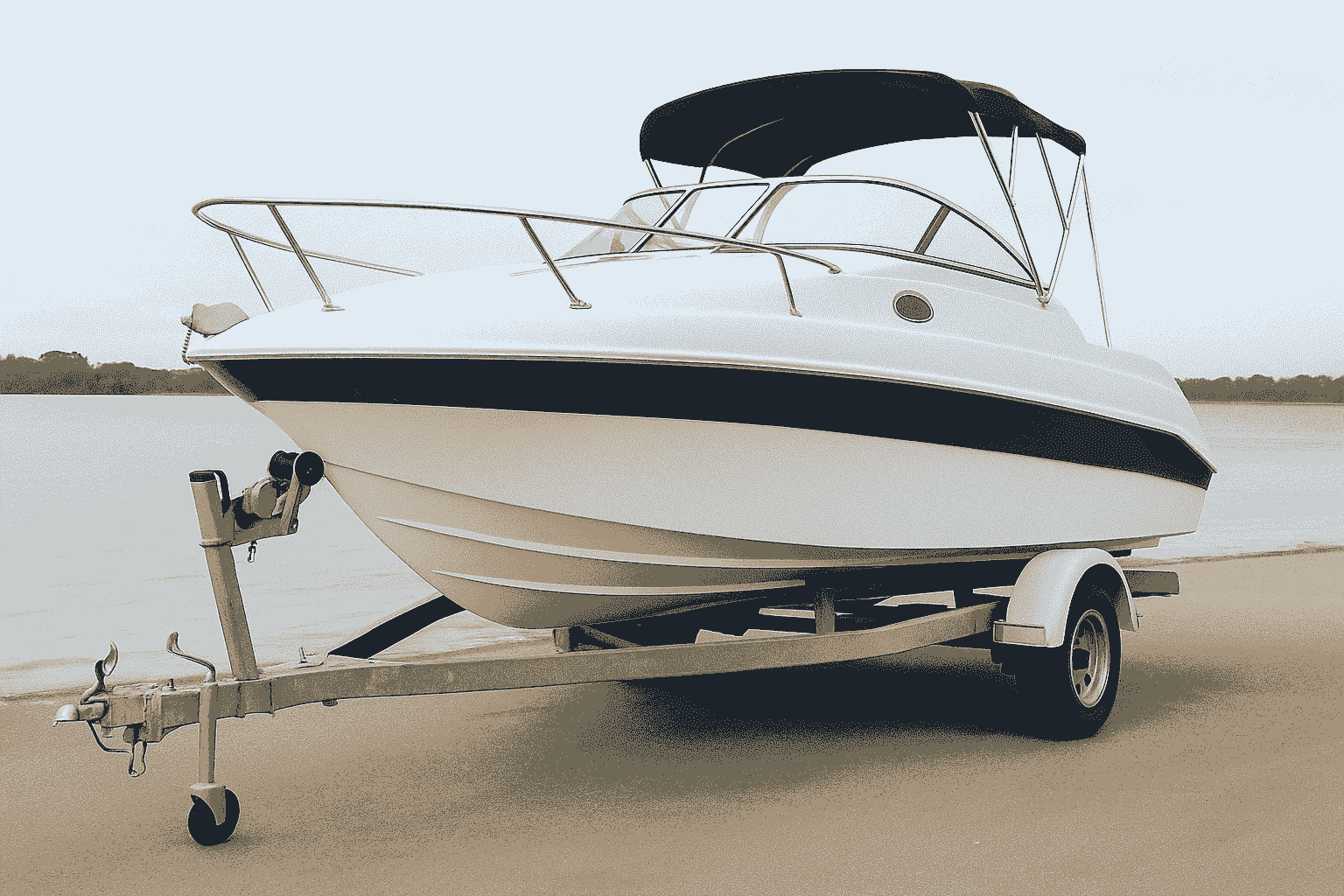Weather, Tides & Storms: Your Guide Sailing in Bad Weather
Author: New Wave Marine | Date: 01.06.23 | 12 min Read
As any experienced sailor knows, the weather can be fickle and dangerous at sea.
One moment the sun may be shining and the waves gentle, but a sudden storm can quickly whip up dangerous conditions.
That's why it's always important to check the weather forecast before heading out onto the water.
No matter how much you prepare, you should always expect the unexpected when it comes to sailing the seven seas.
On this page
Before you go out on the water, check the weather forecast and tidal information
In Australia, we are often blessed with beautiful weather.However, tropical cyclones, severe thunderstorms and damaging winds are also not uncommon.
Have you mastered meteorology?
Unless you are an expert when it comes to the atmosphere, your weather predictions may not quite match those of a meteorologist.And let's face it, with global warming and climate change, you never quite know what weather is coming your way.
So using a reliable source, such as the Bureau of Meteorology, can help you understand any rainfall, flood, hail, lightning or forecast predicted in the sky.
A quick check of the temperature can also help you stock up on sailing essentials to keep you hydrated, sun-safe and comfortable when it comes to a big day out.
And then there is the sea level to consider
Of course, it is important to check the weather forecast before heading out onto the water but did you know you should also be checking the tides?Tidal information can also be helpful in planning a safe route.
There is much more to tides than just knowing when it is a low or high tide.
You also need to consider the tidal currents and how they can affect your trip.
By knowing what to expect, you can better prepare for the journey ahead and avoid being caught off guard by unfavourable conditions.
Once you are familiar with which tides to expect, you can find some more information in our Guide to Tides to ensure you are ready for the swell that awaits.
If there is a storm warning, stay off the water - it's not worth the risk
If you're thinking about heading out onto the water during a storm, think again.It's simply not worth the risk.
Yes, the storm may have passed by the time you get there, but why take the chance?
There is always the potential for high winds and waves, which can make even the calmest waters dangerous.
And if you do get caught in a storm, you could be stranded for hours - or even days - until help arrives.
So save yourself the trouble and stay on dry land. Your boat (and loved ones) will thank you for it.
Make sure your boat is properly insured in case of damage
Just as you wouldn't hit the open road without car insurance, you shouldn't set sail without insuring your boat - grab a boat insurance quote today!Whether you're cruising the local waterways or crossing an ocean, having proper insurance can give you peace of mind in case of storm or collision damage.
Especially, if you plan on navigating cyclone season!
While the cost of premiums can seem like a burden, it's nothing compared to the financial devastation that can occur if your boat is stranded on a sandbank or sunken in the big blue.
And, just like car insurance, there are various policy options to choose from, so you can find the coverage that best suits your needs.
Find out what to do after a storm so that you can decide whether you may need to make a claim or not.
Always have a life jacket and whistle on board
Are you prepared for a storm?If you're ever out on a boat, there are two things you always want to make sure you have with you: a life jacket and a whistle.
A life jacket will obviously help keep you afloat if you fall in, but a whistle can be just as important. If you're ever in danger and need to signal for help, a whistle will be much more effective than shouting. Plus, it's much less likely to scare away any nearby wildlife.
So whether you're sailing down the coast or just taking a leisurely paddle down the river, always remember to bring your life jacket and whistle.
There is a lifejacket for all occasions, so be sure to check out which type of flotation device best suits your journey.
File a float plan with a friend or family member before you set out
Before setting out on any boating excursion, it's always a good idea to file a float plan with a friend or family member. It is a valuable tool for boat owners to ensure a safe and enjoyable trip on the water. And, if you happen to end up adrift, they'll know where to start looking for you.Below is a sample float plan for a boating trip:
Then, once you're safely back on shore, don't forget to cancel the plan.
Otherwise, they might just come looking for you with a towboat in tow!
Be aware of your surroundings and other boats in the area
If you're going to spend time on the water, it's important to be aware of your surroundings at all times. This means knowing where other boats are in relation to your own, as well as being aware of any obstacles that might be in your path.Of course, this can be difficult when you're trying to enjoy the scenery and relax, but it's essential for safe boating.
After all, you don't want your relaxing day on the lake to end with a collision!
So take a few minutes to orient yourself before setting out, and keep a lookout for other boats and potential hazards throughout your journey.
By being aware of your surroundings, you can help avoid accidents and make sure everyone enjoys a safe and fun day on the water.
Weather conditions don't just affect you on the water
Have you considered the location of your boat in a storm?Although you may be safe on shore, stormy weather over the marina can see your trusty island hopper bouncing around its mooring. Which is not so ideal when you are parked between luxury liners and super yachts.
When you apply for insurance, you will be asked some simple questions about how you store your boat. Not only does this determine how much you pay, but it also determines the coverage for your boat when not in use. Make sure you update your insurance policy if your storage details change to avoid any nasty surprises when it comes to claiming.
When it comes to your onboard equipment, sometimes maintenance costs less than damages
It is important to ensure you keep up with all the maintenance required, including extra equipment, onboard.The oceans will not discriminate when it comes to different types of vessels, so make sure that before you go the distance, all of your equipment and operating systems are in good health.
Here is an example checklist of onboard equipment and operating systems you should consider before leaving:
Look out for any warnings, ensure you have enough fuel to get you out of trouble and double check that equipment such as radios are in proper working order.
While maintenance costs can be significant, they can also save you money in the long run.
And don't forget those extra boat accessories you may have forgotten to add to your policy or which may not be covered. The cost of repair or replacement may outweigh the costs of simple maintenance.
Know who to call for help when you need it
If you do get stuck in severe thunderstorms or are unfortunate enough to meet a damaging wind at sea, there is help available.Australian Volunteer Coastguard
You have most likely seen the bright yellow vessel parked or patrolling on our waterways, but did you know that they rescue thousands of people each year?This team of volunteers work with other agencies in response to marine emergencies to keep boaters safe on our waterways.
You can get marine assistance, log your trips or even become a volunteer yourself.
Find out more at https://coastguard.com.au/.
Australian Maritime Safety Authority
AMSA has 24/7 search and rescue capabilities which allow them to assist boaters in maritime emergencies across our nation.Their Joint Rescue Coordination Centre (JRCC) is staffed by all the experts needed to undertake exemplary search and rescue operations.
For serious incidents on our waterways, you can find out more about Search and Rescue at https://www.amsa.gov.au/.
Marine Rescue NSW
Marine Rescue NSW has 45 units available on our waterways in NSW to keep boaters safe on the water.This volunteer organisation can offer lifesaving advice to keep you and your loved ones safe at sea.
Head to https://www.marinerescuensw.com.au/ to find out more about how they can help.
Volunteer Marine Rescue QLD
Volunteer Marine Rescue QLD (VMRAQ) provides volunteer search and rescue services to the boating public, spanning across 2,700km of coastline.Made up of volunteers, they have 25 affiliated squadrons throughout the state of QLD, operating in tropical and subtropical waters.
Go to http://marinerescueqld.org.au/ for more details about how they could help.
Victoria Marine Rescue Society
The only 24/7/365 volunteer marine rescue resource in VIC is the Victoria Marine Rescue Society (VMRS).These highly skilled volunteers dedicate their time and energy to providing emergency search and rescue services on the Victorian waterfront. Station 35, or otherwise known as, RCM-SAR 35, are hard working individuals who provide help to mariners in distress.
Visit https://vmrs.org/ for more information about the services they provide.
The South Australian Sea Rescue Squadron Inc
SA Sea Rescue Squadron is a group of volunteers who serve the boating public of South Australia.With over 150 active volunteers, they provide services for boaters across SA, patrolling and rescuing stranded boaties to keep the coastline safe.
To find out more about their services, visit https://sasearescue.org.au/.
Volunteer Marine Rescue Western Australia
The Volunteer Marine Rescue Western Australia (VMRWA) is proudly committed to giving their time and effort to mariners in trouble on the waterways across WA.NTF1 Darwin
For those in the Northern Territory, NFT1 Darwin is a Flotillia, dedicated to marine search and rescue along the coast line.It is part of the Australian Volunteer Coastguard.
Contact details can be found at https://coastguard.com.au/flotilla/ntf1-darwin/.
Owning a boat means knowing how to call for help
We all like to be brave but we don't always have to be the hero.Knowing when to call for help is just as important as knowing how to call for help.
There are a few ways you can alert authorities in an emergency:
- Always call 000 in an emergency!
- Use your mobile phone to call the Joint Rescue Coordination Centre (JRCC) on their 24/7 emergency contact number 1800 641 792
- Make a radiotelephone distress call on your VHF radio - ensure you have the channel frequencies on display so that you can easily access them if needed (read more about channel frequencies monitored by the ASMA here)
- Set off a distress flare and display an orange PVC V sheet when you can see a rescuer in the distance
- Send an electronic distress alert via satellite by activating your Emergency Position Indicating Radio Beacon (EPIRB)
Like most skilled skippers, having essential safety equipment onboard allows you to be prepared for any event that life throws your way.
There are also minimum safety regulations in each state to minimise the amount of incidents each year, so be sure to check your vessel before you leave the shore.
Unfortunately, severe thunderstorms are just a part of boat ownership
Now that you know all the things you need to do before heading out on the water, there's just one more thing - make sure you have proper boat insurance coverage.At New Wave Marine Insurance, we understand that boating is your passion and we want to help you protect your investment.
We offer comprehensive insurance plans for all types of boats so you can choose the coverage that best fits your needs.
Get a boat insurance quote today and let us help you find the peace of mind that comes from knowing your boat is properly insured.
Do you want to read more?
Check out these popular articles:
Explore Blog categories
Want to receive the latest news and boating advice?
We offer a convenient newsletter subscription service that delivers the latest updates to your inbox. To sign up, visit our website and enter your email address in the subscription box. It's quick, easy, and free, and you'll be the first to know about any new products or services we offer
Thanks for signing up!



